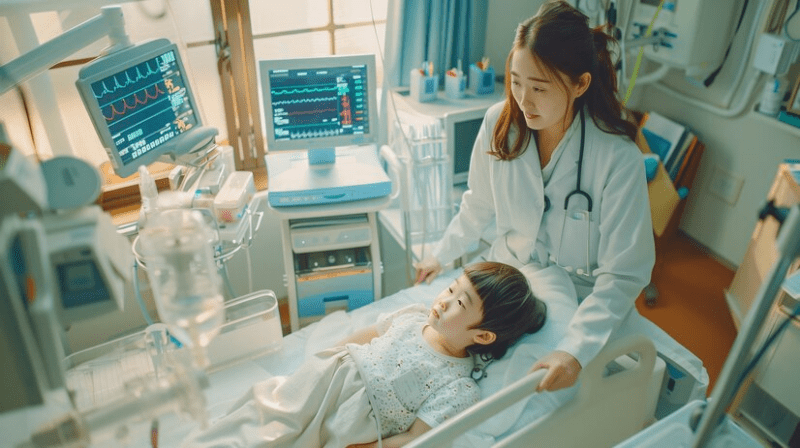
Transitioning from hospital to home can be challenging for children with complex medical needs and their families. In pediatric complex care, planning is important to ensure the process is as smooth and supportive as possible.
For families, transition planning is not just about managing the medical side. It’s about balancing emotions, resources, and practical steps to create a stable environment for your child. With the right preparation, transition planning can turn an intimidating task into an empowering experience.
Understanding Complex Care Needs
Recognizing the care needs of medically complex pediatric patients is important for effective healthcare. With complex care, it involves managing the ongoing challenges faced by babies with severe medical issues that require coordinated support.
Although these little ones may encounter difficulties with growth and a higher risk for infections, they’re supported by a team of healthcare professionals. This team works collaboratively to nurture every aspect of their health and well-being.
Common conditions leading to complex care needs in children include:
- Congenital heart defects
- Respiratory disorders
- Genetic syndromes
- Neurodevelopmental issues
These conditions can have a big impact on daily life and development. That’s why patients need specialized therapies and interventions to support their growth. In addition, families caring for these infants may face various challenges, making a strong support system essential.
Key Stages of the Transition Process
Pediatric transitional care helps ensure a smooth transition from the hospital to your home. This process involves the following stages:
- Preparation. This involves assessing your child’s medical condition and readiness for discharge. Healthcare providers will collaborate with your family to ensure you understand your baby’s needs and medication regimens. They will also guide you on any necessary equipment or modifications required at home.
- Implementation. This focuses on coordinating the transfer of care from hospital staff to home healthcare providers.
- Follow-up and evaluation. Once your child is home, ongoing follow-up and evaluation are important so their medical team can monitor their progress. Regular check-ins help identify potential issues early, ensuring your baby receives the support and resources they need.
Developing an Effective Transition Plan
An effective transition plan is important for smoothly shifting your baby from hospital care to home. It ensures their medical needs are met, promoting their overall health and well-being. Here are steps for creating an efficient transition plan:
Assessment of Needs
In pediatric nursing care, assessing your child’s needs is one of the first steps to creating a transition plan. Aside from identifying your infant’s medical requirements, it also involves understanding their emotional and developmental needs. During this stage, pediatric nurses observe how children respond to treatment, helping to create personalized care plans.
That said, collaborating with a multidisciplinary care team ensures that all aspects of your baby’s health are addressed. Depending on your baby’s condition. This team includes pediatricians, specialists, social workers, psychologists, and therapists.
Consistent communication among team members helps everyone stay informed about your child’s progress. Thus, enabling timely adjustments to the care plan as needed.
Goal Setting
Effective goal setting is important for your child’s successful transition from hospital to home. By collaborating with your family, healthcare providers can establish realistic goals that reflect your child’s unique circumstances and empower you to take an active role in the care plan.
That said, tailoring the transition plan to your baby’s needs and preferences is also vital. Every child has unique medical requirements and family dynamics. So, the care plan should address both medical and emotional aspects of their well-being.
Resource Identification
Once you have a medical team and plan in place for your child’s pediatric complex care, the next step is to identify medical resources and services necessary for your child’s discharge. These resources can include equipment, medications, and home health services.
By clearly outlining these needs, your family can feel more prepared and confident in managing your baby’s care at home. Connecting with community support systems is equally important. They can help you if you may not know about available resources like local support groups, educational programs, or financial assistance services.
Family and Caregiver Involvement
When your family engages in the transition process, you become active participants in your child’s care, which can lead to better outcomes. This involvement helps your family understand your baby’s medical condition, treatment plans, and care requirements. Thus, it effectively boosts your confidence in managing care at home.
Collaborating and communicating with your care team during this process is also important so you feel supported. With healthcare providers, they help you facilitate open dialogue, encouraging you to ask questions and share concerns.
Regular check-ins, educational resources, and training on care procedures can empower you to manage your child’s needs confidently.
Make Home Transitions Easier with Nursing Evolutions
Effective transition planning is essential for the well-being of children with complex care needs as they move from the hospital to home. With the help of healthcare providers, you are able to take an active role in your child’s care by emphasizing family involvement, open communication, and resource identification.
To ensure a smooth transition, consider working with nursing services specializing in pediatric complex care. At Nursing Evolutions, we aim to help children safely transition from the hospital to their homes. For more information, get in touch today!
Frequently Asked Questions (FAQs)
If you want to know more about complex care, here are additional information that you need to keep in mind!
What is complex care?
Complex care is a specialized healthcare approach for children with chronic, severe, or multiple medical conditions requiring comprehensive support. It focuses on managing interconnected health issues through personalized care plans to improve the patient’s quality of life.
What are the benefits of a multidisciplinary team in complex care?
A multidisciplinary team unites healthcare professionals with various expertise to deliver comprehensive care. This collaboration improves communication and creates more effective, personalized treatment plans to address all aspects of the patient’s health.
What challenges do families face when navigating complex care for their kids?
Families managing complex care for their children face various challenges, such as coordinating appointments and understanding medical information. That’s why access to support and resources is important for effective care management.




